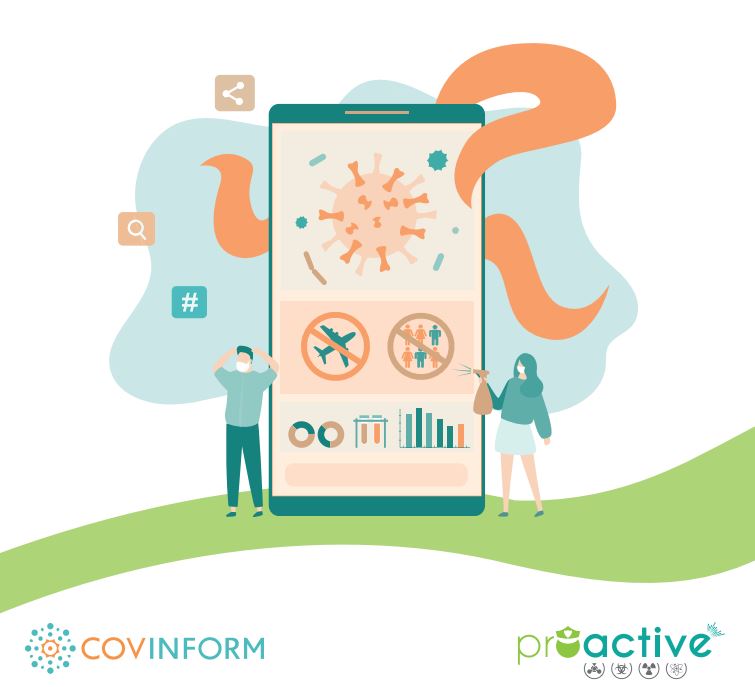



Inclusive Communication in time of crisis, lessons learned and recommendations from COVID-19 and other CBRNe incidents based on recent COVINFORM & PROACTIVE findings.
The present Whitepaper has been jointly developed by the COVINFORM and PROACTIVE projects funded under GA No. 101016247 and No. 832981. Anson, S., Bertel, D., Havârneanu G., & Petersen, L. (2021). Inclusive communication in times of crisis: lessons learned and recommendations from COVID-19 and other CBRNe incidents based on recent COVINFORM & PROACTIVE findings. Whitepaper. DOI: 10.13140/RG.2.2.27104.97286
Modern societies face a multitude of hazards and threats that when combined with particular conditions, result in a disaster. This year the European Commission has highlighted how COVID-19 is the largest crisis to hit Europe in recent years. During this same time, Europe has also witnessed extreme weather, droughts, wildfires, storms, extreme rainfall, floods, earthquakes, terrorist attacks and cyberattacks1 . COVID-19 has also brought attention to biological threats which are part of a wider cluster of incidents: Chemical, Biological, Radiological, Nuclear and explosive (CBRNe). For example, bioterrorism is an important concern, as three terrorist plots involving hazardous materials were disrupted in Paris, Cologne and Sardinia in 20182 . All of these disasters demonstrate the extent to which substantial health, societal and economic impacts are increasing. They also are a strong reminder that a lack of communication on the protective measures to take during a crisis can exacerbate existing and create new vulnerabilities. The key role that communication plays in preparing for and responding to a crisis has come to the forefront during the COVID-19 pandemic. The general public across Europe have relied on the communication of information about what protective measures to take (e.g., hand washing, how to wear masks, physical distancing, when to isolate). However, this communication was not created with all of society in mind and recognized best practice for crisis communication was not always being widely applied. For instance, in the beginning of the pandemic government websites which provided crucial, life-saving information were not conceived with vulnerable groups in mind (e.g., not compatible with text-to-speech readers).
Fichiers associés :